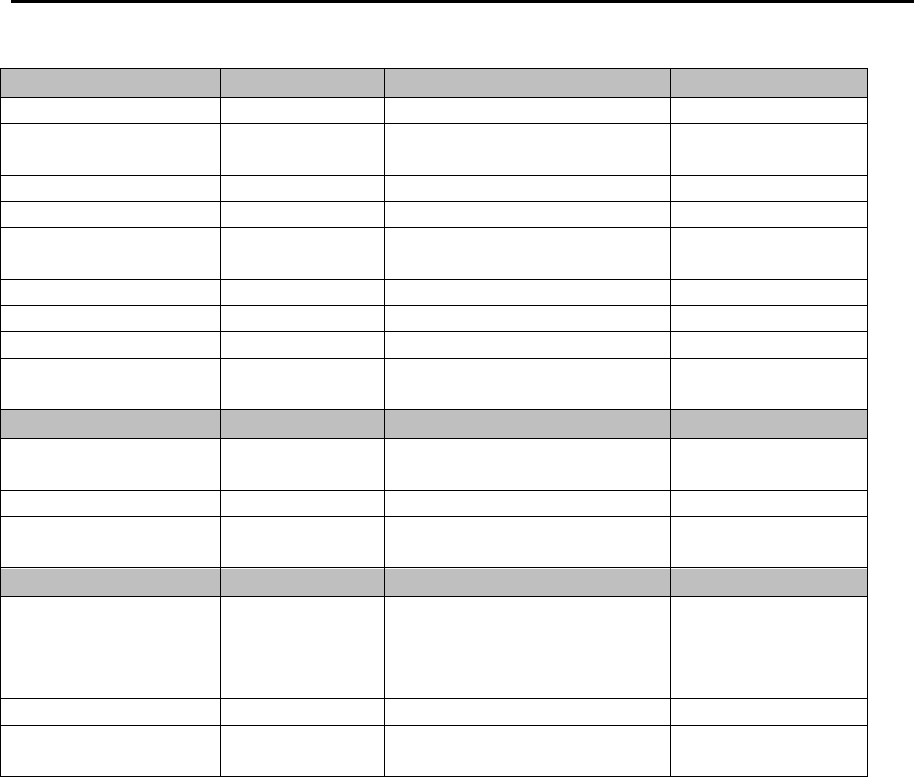
The Last Word 3.0 Reference Manual
8-52
Flags (ON/OFF)
Argument
Comments
Default
80COLUMNS
ON ¦ OFF
Set 80 / 40 column mode
ON
PAGEWAIT
ON ¦ OFF
Set page wait mode during
printing
OFF
WORDWRAP
ON ¦ OFF
Word wrap on/off
ON
INSERT
ON ¦ OFF
Insert mode on/off
ON
CASESENS
ON ¦ OFF
Case sensitivity (search
and replace)
OFF
CAPSLOCK
ON ¦ OFF
Caps lock on/off
OFF
KEYCLICK
ON ¦ OFF
Set key click noise on/off
ON
SIONOISE
ON ¦ OFF
Set I/O noise on/off
ON
WILDCARDS
ON ¦ OFF
Set wildcards in
search/replace on/off
ON
Flags (ON/OFF)
Argument
Comments
Default
ATTRACT
ON ¦ OFF
Enable/Disable OS colour
cycling
ON
DOCMODE
ON ¦ OFF
Set document/text mode
OFF
SDXDIR
ON ¦ OFF
Set long directory style
(SDX only)
OFF
Text Settings
Argument
Comments
Default
FILEEXT
<EXT>
Set default text mode
extender.
Should be entered
WITHOUT leading period.
TXT
DRIVE
Dn:
Set default drive ID
D:
FILESPEC
<filemask.ext>
Set default file mask for
disk menu
*.*
A good way to understand CFG files is to load the LW.CFG file into the editor. You
might also save the current configuration with <SHIFT+CTRL+Q>, giving it the name
TEST.CFG to see how any settings you have altered in the editor are reflected in the
CFG file. There’s nothing to stop you loading a CFG file into the editor and changing it
manually, although you should take care not to introduce syntax errors into the file.
Some settings – like the default print margins – require you to edit the CFG file by
hand, since there is no command in LW to changed them.
Note: Prior to version 3.0, LW configuration files were binary files and were edited
using the supplied configuration editor. Now, however, LW’s config files are plain text
files and the configuration editor is no longer required. Note also that configuration
(.CFG) files from earlier versions of LW are totally incompatible with version 3.0.
8.2.1 THE DEFAULT DRIVE
The DRIVE instruction in a configuration file sets the default drive in LW. This is the
device ID which is added to any filenames you type without Dn: at the front. It is also
used as the drive number when cataloguing files using the disk menu.
DRIVE D1:
The above line simply sets the default drive to drive 1.


















